Episode 96 Show Notes
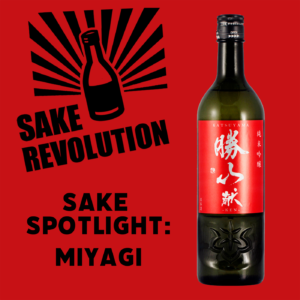 Episode 96. Listen at SakeRevolution.com. What’s the first thing that pops to mind when you hear the word “Miyagi”? Well, Daniel-san, if you’re our age, it might be Mr. Miyagi’s “wax on, wax off”. But we are digging deeper to discover the real Miyagi – Miyagi Prefecture that is! And, by listener request, we’ll be exploring some of the brands and sakes that are a part of this fascinating and resilient region. With only 25 breweries total, Miyagi suffered a major blow during the March 2011 Great East Japan Earthquake and tsunami. Six of the 25 breweries were completely destroyed. With the support of sake lovers, government support and a lot of hard work, all of the effected breweries were rebuilt and are back in business. There is so much to love about this interesting prefecture. Our sake tasting takes us back to Katsuyama Brewery, which is well known for it’s rich, fruity and luxurious styles of ultra-premium sake. This delicious brew has us looking forward to our next trip to Miyagi. #sakerevolution
Episode 96. Listen at SakeRevolution.com. What’s the first thing that pops to mind when you hear the word “Miyagi”? Well, Daniel-san, if you’re our age, it might be Mr. Miyagi’s “wax on, wax off”. But we are digging deeper to discover the real Miyagi – Miyagi Prefecture that is! And, by listener request, we’ll be exploring some of the brands and sakes that are a part of this fascinating and resilient region. With only 25 breweries total, Miyagi suffered a major blow during the March 2011 Great East Japan Earthquake and tsunami. Six of the 25 breweries were completely destroyed. With the support of sake lovers, government support and a lot of hard work, all of the effected breweries were rebuilt and are back in business. There is so much to love about this interesting prefecture. Our sake tasting takes us back to Katsuyama Brewery, which is well known for it’s rich, fruity and luxurious styles of ultra-premium sake. This delicious brew has us looking forward to our next trip to Miyagi. #sakerevolution
Skip to: 00:19 Hosts Welcome and Introduction
Welcome to the show from John and Timothy
Skip to: 01:51 Sake Spotlight: Miyagi
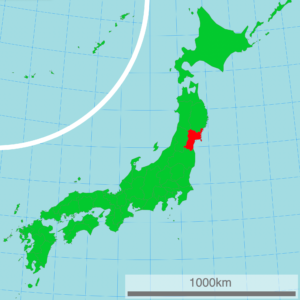
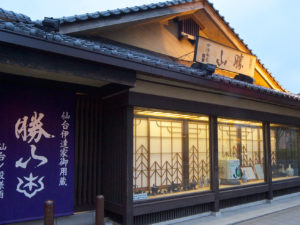
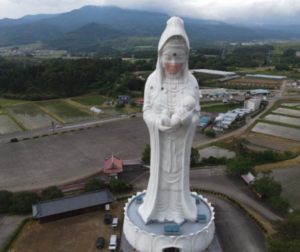
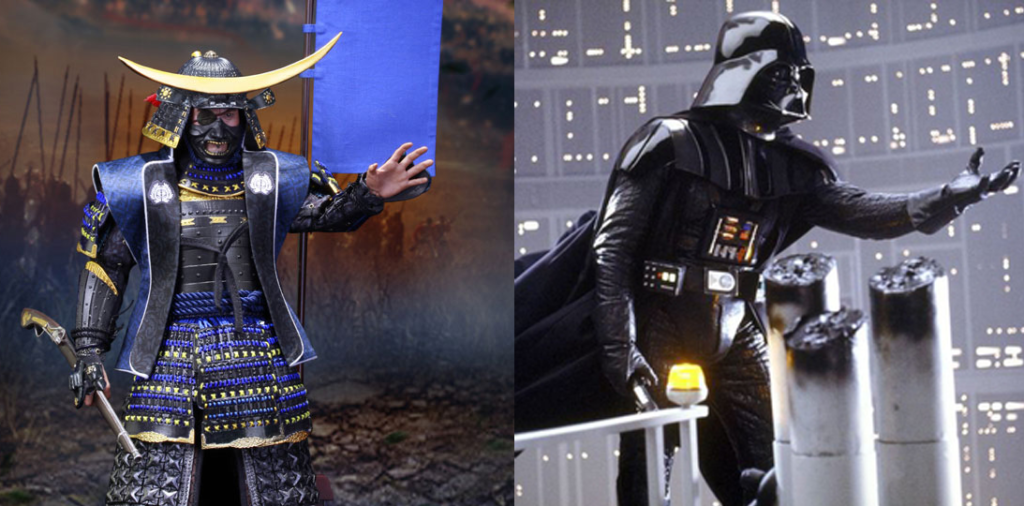
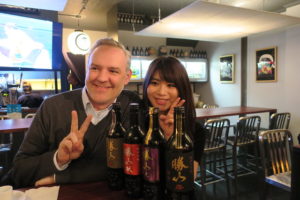
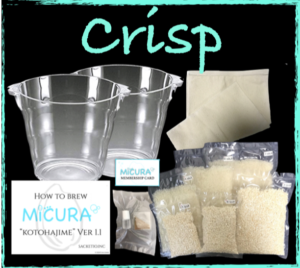
Miura Sake Home Brewing Kit
Website: https://micura.jp/
Instagram: https://www.instagram.com/micura_sake_brewing_kit/
Twitter: https://twitter.com/euka525
Facebook: https://www.facebook.com/micurasake
Katsuyama Supreme Sake Corporation
Website: https://www.katsu-yama.com/en/
Youtube: https://www.youtube.com/channel/UC7mXUiqyFHf3RPxVnNC7PnQ
Facebook: https://www.facebook.com/katsuyamasake/
Instagram: https://www.instagram.com/katsuyamasake/
Skip to: 21:13 Sake Introduction and Tasting: Katsuyama Ken Junmai Ginjo
Katsuyama Ken Junmai Ginjo
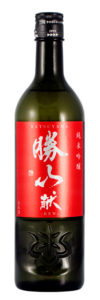
Seimaibuai: 50%
SMV: +3.0
Rice Type: Yamadanishiki
Prefecture: Miyagi
Alcohol: 15.0%
Classification: Junmai Ginjo
Acidity: 1.6
Brewery: Katsuyama Shuzo
NOTE: Use Discount Code “REVOLUTION” for 10% off your first order with Tippsy Sake.
Skip to: 33:01 Show Closing
This is it! Join us next time for another episode of Sake Revolution!
Support us on Patreon
 Now there is a new way to support Sake Revolution. Join us on Patreon! Patreon is an online platform that allows you to support your favorite creators by subscribing to a monthly membership. At Sake Revolution, we’re offering two tiers, each with its own perk. If you enjoy our sake podcast, if you are able, please consider supporting this labor of sake love! See below to learn about our Patreon support levels.
Now there is a new way to support Sake Revolution. Join us on Patreon! Patreon is an online platform that allows you to support your favorite creators by subscribing to a monthly membership. At Sake Revolution, we’re offering two tiers, each with its own perk. If you enjoy our sake podcast, if you are able, please consider supporting this labor of sake love! See below to learn about our Patreon support levels.
-
Sake Enthusiast
Have you ever wanted to sip along with us as we taste our sakes on the podcast? Now you can! As a Sake Enthusiast patron, you’ll get the inside track and know in advance which sakes we’ll be featuring on the show. This allows you to get them on hand and sip along with us while you listen.
-
Sake Otaku
As a Sake Otaku supporter of the pod, you’ll get access to all the Sake Enthusiast intel along with access to a monthly live zoom Sake Happy Hour taking place the first Weds of every month at 9pm ET (6pm PT). Visit with us live on zoom! Come with all your questions and suggestions and enjoy a relaxed and fun Happy Hour with with us as we all sip sake together!
Episode 96 Transcript
John Puma: 0:21
Hello everybody. And welcome to Sake Revolution. This is America’s first podcast, and I am one of your hosts. My name is John Puma from the Sake Notes. I’m also the administrator over at the internet Sake Discord, a nice little community for people to get together and talk sake.
Timothy Sullivan: 0:41
And I am your host Timothy Sullivan. I’m a sake samurai, sake educator, as well as the founder of the Urban Sake website. And every week, John and I will be here tasting and chatting about all things sake and doing our best to make it fun and easy to understand.
John Puma: 1:01
Here we go again, Tim, we’re back for another exciting episode. Um, and I don’t think we’ve done one of these in a while.
Timothy Sullivan: 1:11
Yes. And this was actually a listener request, which we always love to receive.
John Puma: 1:16
yeah, yeah, yeah. So, yeah. Number one, listener request and number two. We’re going to do a little prefectural, a visible prefecture, deep dive, which I think is always a lot of fun. I like these episodes. They helped me to kind of dig around and find out things about, uh, about prefectures and parts of Japan that I didn’t know. And, uh, you know, I come out a little wiser.
Timothy Sullivan: 1:41
Hmm. And I know this is a prefecture that you and I have both visited, so we’ll both have our stories to share. Do you want to tell our listeners where we’re going today?
John Puma: 1:51
we are going to Miyagi.
Timothy Sullivan: 1:54
Ooh, Miyagi. So where where’s Miyagi situated in Japan.
John Puma: 2:00
Miyagi’s in the Tohoku region, now people may remember when they, when they hear the word Tohoku, sometimes people will remember the earthquake and, accompanying a disaster, uh, went along with it from, uh, from 2011, March, 2011. Um, obviously a very, very tragic time for that, that region of Japan for that whole area. Uh, and on me, I’ll use a part of that, a part of that area, and they did suffer damage as a result.
Timothy Sullivan: 2:31
And Tohoku is the Northern part of the main island.
John Puma: 2:37
Correct. Right. So we’re talking north of Tokyo. Uh, by, I want to say, well, she can say you’re about two, a two and a half hours. I want to say.
Timothy Sullivan: 2:46
And it’s facing the Pacific ocean. So it’s on the Pacific ocean side of the main island of Japan in the north. And, uh, it’s a, uh, prefecture that has a few famous things and some great sake, which we’ll talk about in a bit. When I think of Miyagi, I think about some of the famous food that comes from there as well.
John Puma: 3:10
Um,
Timothy Sullivan: 3:11
one dish that I confronted. I’ll say
John Puma: 3:16
confronted. All
Timothy Sullivan: 3:17
one food that I came across in my travels through Miyagi was Gyutan. Do you know what the.
John Puma: 3:25
that’s a. Yeah, that’s that beef tongue.
Timothy Sullivan: 3:29
That is beef tongue,
John Puma: 3:31
Ooh.
Timothy Sullivan: 3:33
the food that tastes you back.
John Puma: 3:36
nice.
Timothy Sullivan: 3:38
So Gyutan is the beef tongue, very famous from Sendai, which is the capital of Miyagi and from the Miyagi region. Beef tongue is one of those dishes that if they don’t tell you what it is and you just eat it, it is really delicious and super soft. But the moment, you know, it’s beef tongue, it’s a little challenging for some people, but. The the way that I encountered gyutan in Sendai was kind of amazing. And I’ll always remember this. I got a bento box. It was purchased for me at the Sendai train station. And it was a self heating bento box.
John Puma: 4:27
That’s awesome.
Timothy Sullivan: 4:29
seen those before
John Puma: 4:31
I have, I’ve heard of them, but I’ve never used one. I’ve never seen one in the flesh.
Timothy Sullivan: 4:37
looks like a regular cardboard bento box and it has a yellow string hanging out of the. side and you pull the string out and that releases some chemical. It’s almost like a cool pack underneath, but for hotness and some chemicals combine under there and it heats up and the rice and the gyutan, the beef tongue start to bubble away and it gets really hot. And it is the most bizarre thing you’re sitting on the bullet train with this little cardboard box in front of you. And it starts to bubble and steam out of like magic. It was insane. And again, if you don’t know what you’re eating, it was really delicious. So,
John Puma: 5:19
I’m into it. That sounds really good. The beef tongue part, well less excited about, but the, um, BB self heating bento sounds like a lot of fun.
Timothy Sullivan: 5:29
Yeah. And it, if you have a little. Sendai sake on the side. It’s like, perfect. So what other, what other foods do you know from Miyagi prefecture?
John Puma: 5:41
Uh, so for me, when I think of Miyagi prefecture, uh, I first think of, uh, Mr. Miyagi, the, the, uh,
Timothy Sullivan: 5:49
Wax on wax off.
John Puma: 5:50
the guiding character from the Karate Kid from when I was a kid. but no kidding aside, I think of the, the Sanma that, that Pacific Surry pike fish, because I had, I had an experience with that as well, uh, at a, uh, at a sake brewery, uh, visit. We had dinner with the Kuramoto afterward and he was very pleased that his chef was from sendai. This brewery was not in the Sendai. And one of the courses he was very happy about was a, uh, was a sanma that was stewed for several days. And then you would just, uh, eat through the entire fish, with your chopsticks. Like you can, you can cut the fish with the top. All of it, Tim. I mean, it’s not, it’s, it’s bones, all of it because they’re melted from being stewed for, for a couple of days. Like for, for being in that, low heat for that long, everything kind of gets the same texture. Almost. This is another one of the situations where if you don’t know what it is, it’s, it is delicious. The flavoring was perfect. Wonderful. But when you know what you’re doing and you’re going through all the different textures when you’re eating it, it gets a little, a little frightening at times, especially for my my easily frightened Western palate. Uh, so yeah, it was a, it was quite an experience.
Timothy Sullivan: 7:20
Yeah. Well, it, it’s a wonderful place to visit. I have had great experiences in Miyagi. I think you have to, and as I mentioned, a moment ago, Sendai is the Capitol of Miyagi prefecture about 1 million people. And there’s a famous guy. Who’s kind of, uh, the key figure, the key historical figure, right?
John Puma: 7:45
Yeah. And he’s had a famous look.
Timothy Sullivan: 7:47
Yes.
John Puma: 7:48
see. Yeah. So Date Masamune, um, he founded Sendai in the year 1600 and he was a, like a Daimyo, a warlord kinda in that, that period of history where they were just kinda like figuring it out. Right. And. He’s known for kind of wearing this like iconic black armor and, is often depicted with this like really exaggeratedly large, uh, Crescent, moon, um, like, uh, uh, medallion, I guess you want to say on his, on the helmet of his armor, it’s very, very distinctive. You’ve probably seen, this character before, or like, you know, depictions of him one way or the other, and rumor has it. Uh, although I’ve not been able to stand Shate, this is that the visual aesthetic that’s that’s prescribed to, uh, to Masamune was a lot of the influence for, um, uh, Ralph McQuarrie’s sketches of Darth Vader back in the seventies when they were doing Star Wars.
Timothy Sullivan: 8:49
Yeah, If you look at the shape of Date Masamune’s helmet, his black helmet, and then you look at Darth Vader. it’s pretty similar. I think
John Puma: 9:01
almost, it’s almost like lawsuit worthy at times. It’s
Timothy Sullivan: 9:05
If this were MythBusters, I think this myth would be confirmed, right?
John Puma: 9:11
That’s, that’s what they, that’s what they say. Mythbusters hasn’t been on for a long time. So never got to think about that. Um, well, yeah, apparently also he was called a Doku Gon Ryu the one eyed dragon of OSHU cause apparently he had a missing eye as well.
Timothy Sullivan: 9:28
Oh, Yeah. He wore an eye patch.
John Puma: 9:29
Yeah. So he’s like even more of a bad-ass than originally.
Timothy Sullivan: 9:34
And not only was he a total bad-ass and founded the city, but he also brought sake brewing to Sendai. so he was a big fan of sake.
John Puma: 9:44
my favorite samurai right
Timothy Sullivan: 9:45
yeah. when he became the daimyo, the warlord. Uh, about four years after he got started there, he summoned brewers from Nara and founded his own sake production in his castle. So,
John Puma: 9:59
awesome.
Timothy Sullivan: 10:00
so he is revered for being the founder of the city, but for sake people, he’s also revered for being a big sake lover to,
John Puma: 10:09
I’ve actually only been to Sendai as Miyagi prefecture goes. And then I had only been to Sendai for one day,
Timothy Sullivan: 10:16
Oh,
John Puma: 10:17
but I do want everybody to know at home that, like when I said earlier that you can get there in two hours on the bullet train, I really mean it. It’s extremely convenient and very easy to get to Sendai from Tokyo station, so you can go there, do a day trip, you know, get around. if for some reason it doesn’t fit into your schedule to stay overnight. Just get on the train, go back to Tokyo and go back to your hotel room. There’s you’ll be able to spend a full day. I mean, I think about your commute now. You’d probably spend more than an hour going to work. It’s not that bad to just two hours.
Timothy Sullivan: 10:47
I was almost on the subway for two hours going to Brooklyn today. you Sendai and back from Tokyo.
John Puma: 10:52
You can, you can do that. Well, now it’s ended it’s four hours total. Cause he got to go two hours each way. But you know, as you were describing that the Shinkansen experience is wonderful and you might even get a self warming bento box of some kind who knows.
Timothy Sullivan: 11:05
it is a life-changing experience.
John Puma: 11:07
Yes. now when I went to Sendai we were going out to go to a sake brewery and it was one that we’ll, we’ll get to talking about in a little bit, but on the way to the brewery, we’re going up this hill and at the top of the hill was the largest statue I’ve ever seen in my life. And it was terrifying. Like, just cause you could tell it’s really far away and your brain doesn’t really process the idea that like this thing is this big, therefore it needs to be, this distance needs to be close. It’s obviously very far how does this work? And um, this, this statue is actually called the Sendai, uh, Daikannon. And it is one of the tallest statues on earth. In fact, when it was first built in 1991, it was the tallest statue. It’s now been superseded. Uh, it’s now in 2022, the sixth tallest statue, and it’s a hundred meters tall, big, big statute.
Timothy Sullivan: 12:10
Yeah.
John Puma: 12:11
and it’s a, it’s a representation of the Buddhist, goddess of Mercy. And, uh, again, it is it’s huge. And, uh, one little thing they did when the pandemic started was they put a really huge mask on
Timothy Sullivan: 12:25
You’re kidding me.
John Puma: 12:26
They know I’m not kidding you. We will put a photo in the show notes of, of, uh, the Sendai Daikannon with the mask. It’s very, very adorable.
Timothy Sullivan: 12:35
Yeah. All right. Well, what do we know about sake in Miyagi Prefecture. Let’s see
John Puma: 12:44
I like a lot of sake from Miyagi prefecture. That’s what I know. Uh, what about you? What do you know?
Timothy Sullivan: 12:50
could talk just a, just a bit about the history. So the sake brewers association was founded in 1891, which is pretty early for a prefectural association to be founded. And in 1986, the brewers association proclaimed the prefectures flagship style and they declared it to be Junmai sake. So Junmai is kind of officially the the style of the prefecture. And Miyagi actually does produce more Junmai per capita than other prefectures 55% of Miyagi sake production is Junmai compared to the national average of about 22%.
John Puma: 13:36
Um, and when you say June my, are you referring to Junmai as opposed to aruten or Junmai as that particular Sake level.
Timothy Sullivan: 13:49
my understanding is that they’re referring to Junmai versus alcohol added sake. any great of Junmai, but Junmai as a collective. so, putting the emphasis on the pure rice style versus the alcohol added style. So they produce a lot more of that than the national average. And there’s about 25 sake breweries in Miyagi.
John Puma: 14:09
Mm.
Timothy Sullivan: 14:09
yeah, and you, you mentioned the Tohoku earthquake that happened in March, 2011. And of the 25 breweries in Miyagi, six were completely destroyed.
John Puma: 14:23
it’s terrible.
Timothy Sullivan: 14:24
Three suffered, very heavy damage. And 14 of the 25 were partially damaged. And you would think six being completely destroyed that we would now have 19 breweries and Miyagi, but through support of the community, the Japanese government, the prefectural government. And support of the sake industry, all six destroyed breweries were rebuilt and our back in commission. So, uh, there are still 25 breweries in Miyagi, so they didn’t lose any breweries despite the extreme damage that many breweries suffered. So that is a kind of a Ray of sunshine on that horrible chapter of, of a history of miyagi.
John Puma: 15:08
Yeah. Uh, that is, that was kind of terrible.
Timothy Sullivan: 15:12
Yeah.
John Puma: 15:13
but yeah, it is really nice that these breweries were able to recover and come back and. that whole Tohoku region has a stellar reputation for sake quality and Miyagi is no different. They are definitely a part of that. When you think of a breweries from Miyagi, I think of, the one we’re going to talk about today, which we’re not going to mention yet. I also think of, uh, Urakasumi
Timothy Sullivan: 15:41
Oh, yeah. Urakasumi is a brewery I got to visit twice. They make wonderful sake and they’re really famous for their Junmai. Uh, Urakasumi Junmai is really well-known sake from that region. And, uh, it’s a wonderful. wonderful brewery. They experienced a pretty severe flooding from the earthquake, but they have rebuilt and raised up some of their brewery buildings and are back and back in production and doing great so, urakasumi is a great brand. Do you know any other well-known brands Miyagi.
John Puma: 16:17
I am a big fan of Ichinokura,
Timothy Sullivan: 16:20
Oh, Yeah. that is a
John Puma: 16:22
Speaking of Junmai.
Timothy Sullivan: 16:23
yes.
John Puma: 16:24
I think that their Junmai other, I think it’s actually a tokubetsu Junmai is my perfect example of. Honest hard working Junmai like, you know, after work kind of, you know, with your, with your izakaya foods, it’s so perfect for that kind of thing. It’s that, you know, that, that a little bit racy, a little bit light kind of goes with everything. Pretty dry, good stuff.
Timothy Sullivan: 16:48
I love the way you described that, you know, honest, hardworking Junmai it’s like your work a day, your work a day, junmai that is. really premium And smooth and delicious. I love.
John Puma: 16:59
And yeah, I could be like the way I was introduced to it, but it was really good stuff and I still drink it today. It’s still a wonderful
Timothy Sullivan: 17:05
so there’s another famous brewery in Miyagi and you and I have both visited there and we’re going to be trying their sake today. So what brewery are we going to be, uh, enjoying with our Miyagi today?
John Puma: 17:18
Well, when we talk about Miyagi, um, we have to talk about Sendai and we can’t talk about Sendai without talking about Katsuyama Supreme Sake Corporation.
Timothy Sullivan: 17:27
All right.
John Puma: 17:28
you’re not cutting any corners. You’re calling yourself. Katsuyama Supreme Sake Corporation. That’s awesome.
Timothy Sullivan: 17:33
yeah. Katsuyama is a fantastic brewery. in Sendai city in Miyagi prefecture. They’re not the largest brewery by any stretch, but They specialize kind of in wouldn’t you say like a luxury style of sake.
John Puma: 17:48
They do. They specialize in very high end, sake. you know, a lot of their sake is, is, is a little on the expensive side. it is a premium brand, a luxury brand by and large, although they do make. plenty of products that are not exclusively in that category. They’re kind of, they’re known for that. They’re known for those like really high-end sakes, but, you know, they do really make wonderful, wonderful stuff. when I visited, The Kuramoto is telling us a little bit about how, when they were building this facility, this brewery, he really wanted to make a focus on making. You know, the, his dream brewery for making this style of sake for making this like luxury style of sake. and once they did that and they started brewing from new brewery, the brand really kind of took off and now he’s like, well, I made my dream brewery for where we were and now I have a new dream brewery in mind. And it’s just this but a lot bigger. You know, you get to this place where you’re like, oh wow. Now I can, now I need to make more of this because now there’s a lot more demand because it really, it really did pick up for them and became really popular.
Timothy Sullivan: 18:59
Yeah, they were founded back in 1688.
John Puma: 19:03
Um,
Timothy Sullivan: 19:03
So this is another brewery that’s been around for hundreds of years. They probably knew Date Masamune, personally. They probably made sake for Date’s family. What do you think? Probably,
John Puma: 19:17
if he founded Sendai in 1600, that seems unlikely.
Timothy Sullivan: 19:22
Yeah.
John Puma: 19:23
Unless he’s old
Timothy Sullivan: 19:24
Daimyo didn’t live that long back. Yeah.
John Puma: 19:29
unless he founded it at birth. And I lived a very long life.
Timothy Sullivan: 19:35
Well, maybe the descendants of Dante Masamune.
John Puma: 19:39
I am certain that his, that his children and their children enjoyed. Uh Katsuyama.
Timothy Sullivan: 19:45
Yeah. So I, on my visit to Katsuyama, they have a beautiful sake brewery, but they also have a wedding venue business as well. And this is where I was received and I was, uh, given dinner there. And as part of the wedding venue business, they have some beautiful spaces and dining rooms, but they also have a authentic wood-fired pizza oven and I was given. The most delicious pizza in the middle of Sendai. And they said to me, let’s sprinkle a little sake on this pizza. And we, we dripped some sake on the pizza and ate it and oh my God, it was so good.
John Puma: 20:34
that’s wonderful. That’s
Timothy Sullivan: 20:35
amazing. So That’s my, that is one of my standout memories from visiting Katsuyama was like spirit sing my, my, uh, pizza. With a delicious ultra premium sake. It was What a, what a memory? Oh my God.
John Puma: 20:53
Yeah. I unfortunately had to have the, the need to try to explain, because you don’t think you’re going to be going to an Italian restaurant when you’re in Japan. Uh, and I had to explain that I can’t eat cheese and I’m, and I were, in this Italian, venue. On the other side of the world, I’m trying to explain that I need something without any dairy in it. It worked out though the food was absolutely delicious.
Timothy Sullivan: 21:13
Yeah, absolutely wonderful. so this ultra luxury brand Katsuyama which of the sakes from them, are we going to be tasting today? I don’t think we can go wrong, but let us know.
John Puma: 21:26
um, yeah, this is actually a return. Uh, we had had katsuyama Ken on the show once before this is their Junmai Ginjo and. It is Yamadanishiki rice. And it is milled down to 50% of its original size, the sake meter value is plus four. Acidity is 1.6 and the alcohol by volume is 16%.
Timothy Sullivan: 21:53
All right. So this has a lot of the trademarks of a really kind of luxury, super premium sake, and we’re going to see, what happens and you have the bottle,
John Puma: 22:06
I do. And the cuts, a Yamahai bottle is unmistakable because unlike, I want to say almost every other sake bottle I’ve ever encountered, they have the katsuyama brand crest, like bas relieved into the bottle.
Timothy Sullivan: 22:24
So the glass has like the design kind of impressed in it.
John Puma: 22:29
Right. And it’s not like. A tiny little, like it’s not like seared in or scored in. It’s like the shape of the bottle. Uh, it’s it’s a very, very, very well done. There’s no mistaking, a Katsuyama bottle.
Timothy Sullivan: 22:41
and they do that for All their sakes across their whole range.
John Puma: 22:46
So I think it’s time to get some of this wonderful Miyagi sake into our glass. And, um, this is one of those situations where, as soon as you take the top off the bottle, the aroma hits you instantaneously. There’s no getting around it. There’s no pretending it’s not there. You get this aroma, the moment you, uncork this.
Timothy Sullivan: 23:22
Yep. It’s a very outgoing. aroma
John Puma: 23:28
outgoing. I like that.
Timothy Sullivan: 23:30
expansive aroma.
John Puma: 23:33
So
Timothy Sullivan: 23:34
Mm.
John Puma: 23:35
it’s a little off-white. Well far off clear, it has a tiny bit of color to it. Just a tiny bit of yellowy, and yeah, and this aroma is very, very nice. Are you, as you mentioned outgoing, I like outgoing as a, as a descriptor for a Roma.
Timothy Sullivan: 23:56
Yes. I was thinking expressive, expressive aroma, and,
John Puma: 24:03
I do like outgoing though.
Timothy Sullivan: 24:04
very. Fruity classic ginjo aromas here.
John Puma: 24:11
They are, they are not being shy with that it’s front and center. It is, this is a brewery that’s making that luxurious style and that style. We always think of that ginjo-ka, that, that, that ginjo aroma
Timothy Sullivan: 24:25
Hm.
John Puma: 24:25
being the first thing that we noticed. And it’s here. It’s right here.
Timothy Sullivan: 24:28
Yeah. So melon predominates, but there’s also a little bit of pineapple and grape,
John Puma: 24:35
a little more pineapple than I’m used to, uh, which I think is nice.
Timothy Sullivan: 24:38
tropical fruits really come through.
John Puma: 24:41
The tropical fruits a lot more, a lot more pineapple than I’m used to getting from this style of sake, which I think is interesting and different. I like that a lot. Usually we talk about melon a lot in the melon is there, but the pineapple a little bit more, a little bit more present.
Timothy Sullivan: 24:57
You know, when you think of creating what you might call a luxury style profile, that this is very much in line with that it’s. Not too light. You know, it has some, the aroma has some heft to it and it is the full range of tropical fruits. Very well integrated, but very expressive. And that kind of dominance of this ginjo style aroma is what a lot of people expect when you’re talking about a super premium sake. So it very much fits their company profile. Okay.
John Puma: 25:37
Absolutely. I think it is time to give this a
Timothy Sullivan: 25:41
Okay. Um,
John Puma: 25:47
tim. You know how sometimes we talk about how doing this show, um, requires us on occasion to drink sake that is outside of our comfort zone. That is not today. Today, today we are, we have our feet up in our comfort zone, very comfortable, very relaxed comfort zone.
Timothy Sullivan: 26:13
Yeah. So this is rich and silky smooth. has quite a lot of texture to it. So the weight is there.
John Puma: 26:25
what do you, texture is wonderful. There is a nice bit of acidity on the finish
Timothy Sullivan: 26:33
Um,
John Puma: 26:34
I’m not used to getting this kind of body with that kind of finish.
Timothy Sullivan: 26:40
Hmm.
John Puma: 26:40
makes sense. Is this that you mentioned how like this texture is so nice and it balances nicely with everything else that’s going on.
Timothy Sullivan: 26:48
Yeah. For me, the aroma and the palate, the flavor of this sake match perfectly. Sometimes we smell it and I was like, I don’t want to drink this. And we taste it. Oh, It’s delicious. And you know, the aroma and the flavor are, are divorced from each other, but this sake they’re so well matched.
John Puma: 27:10
Yeah. it’s it’s so well-matched that when I was sipping it, I didn’t even think to bring that up because it didn’t even occur to me like, because it was so well integrated. And when you bring it up, I’m like, oh yeah, of course it’s doing that. That’s wonderful. And, and it is, remarkably, well integrated the, the aroma and the flavor of this. Everything is in perfect harmony.
Timothy Sullivan: 27:37
Yeah, and that’s not easy to do so that’s that attests to the skills of the brewers?
John Puma: 27:43
Yeah. If it were easy to do, everybody would be doing it.
Timothy Sullivan: 27:46
Yes. Now you and I have both, uh, met the Isawa family, Heizo Isawa is the Kuramoto or the brewery president and his daughter. Euka Isawa is a brand representative, and she’s a big cheerleader for the sake industry and she’s an up and coming. Promoter of sake and, uh, very involved with her father’s brewery and they’re a lovely, lovely family. And before the pandemic, they would come to New York often and we would always have lovely interactions with them at sake events. And it’s so wonderful to sip their sake and think about all the wonderful conversations we’ve had together. And nice dinners we’ve had is
John Puma: 28:34
Yeah, and, and while we’re talking about, about Euka Isawa, she has another business that we should mention Micura, which is M I C U R A. We’ll put a link in the show notes. And what she does is she sells sake brewing kits from Japan, uh, over to overseas customers, um, just to sell into overseas customers. Why Tim.
Timothy Sullivan: 28:58
Because it’s illegal to home brew in Japan.
John Puma: 29:02
That’s mind blowing to me, but yes, that’s exactly right. Uh, it’s I, to, I remember the first time I heard that, I was like, wow, that’s that can’t be right. But yeah, it is a home brewing is not legal there, but it is in the United States. And I think that to get, you know, if you’re going to get people excited about sake, you have people who are excited about sake. You want to start brewing it, having an avenue for them to get their hands on the, supplies needed to do this is great. And it is something that could spur, you know, the next domestic brewery one day.
Timothy Sullivan: 29:35
Now John, have you ever done Ekua’s, Micura kit? Have you ever tried to brew sake with it?
John Puma: 29:42
Yes,
Timothy Sullivan: 29:43
You have
John Puma: 29:44
I actually, I was a, I was one of the first people who bought the kit.
Timothy Sullivan: 29:49
What happened?
John Puma: 29:51
It did not go well for me, but, uh, there are temperature control reasons in my apartment that are outside of my power to influence. And I was editor way too aggressive and did not wait until it was winter, which is another bad thing. I shouldn’t, I should have done. What I should should’ve known is probably did it in winter and probably did it like. On my fire escape or something like that. Um, because, I live in a pre-war building in New York. And what that means is that in the winter time, my apartment is anywhere from 85 to 90 degrees all the time.
Timothy Sullivan: 30:30
yes, Blasting the steam heat. Yeah.
John Puma: 30:33
you don’t. We have no control over this heat. It’s just there always and everywhere. It makes it really difficult to do things like this. And then unless you’ve got like a really substantial like fridge or something like that, and I did not, and I should have waited and I didn’t wait and I screwed up my sake. I have nobody to blame, but myself
Timothy Sullivan: 30:53
Well, I think we should try again. We should both get, we should both get a kit and that would be really fun. So check the show notes. If you want to order the home brewing kit from, Katsuyama, I’m curious, but I’m also really scared because it. could go sideways.
John Puma: 31:15
well, both to a kit and then we’ll, we’ll give each other the, you know, a sample of each other’s sake. And then we’ll, we’ll do a little episode where we, we trained, you know, Sullivan, kura. Okay. Puma
Timothy Sullivan: 31:28
Kura, well, help
John Puma: 31:30
yours? Sullivan. Kura?
Timothy Sullivan: 31:31
Don’t know,
John Puma: 31:33
Urban Kura?.
Timothy Sullivan: 31:37
Uh, I hope we don’t poison each other. That would be a sad way to end
John Puma: 31:40
think it’ll be that bad. Yeah. Uh, the short version is, uh, mine died.,
Timothy Sullivan: 31:47
Your, your
John Puma: 31:48
my my fermentation died.
Timothy Sullivan: 31:51
Oh, well you got to get back up on that horse, John, and
John Puma: 31:57
One day I will.
Timothy Sullivan: 31:58
Okay. So. Uh, that won’t happen anytime soon, cause we need to get those kits from Japan. But check the show notes if you’re interested and we may have a future episode with, uh, the revolution team homebrewing. it
John Puma: 32:15
Tim you’re writing checks. I don’t know if I can cash.
Timothy Sullivan: 32:17
Sounds dangerous. Well, this is a lovely sake from Katsuyama. Everything they make is fantastic. It’s definitely on the luxury side of the spectrum. So if you like that velvety silky richer style, this brewery is definitely one to check out
John Puma: 32:39
And, you know, I do.
Timothy Sullivan: 32:42
Yes. we could do another bougie brews episode and
John Puma: 32:46
Yeah. Yeah.
Timothy Sullivan: 32:48
any time. Well, this was a great pick, really fun to talk about Miyagi. Can’t wait to go back when we’re allowed, uh, really looking forward to that. Great to taste with you, John. Wonderful
John Puma: 32:59
Always is Tim always, always.
Timothy Sullivan: 33:01
And I also want to thank our listeners for tuning in again this week. We really do hope that you’re enjoying Sake Revolution. Now, if you would like to show your support for our show, the best way to help us out now is to join our community on patreon. We are listener supported show and all the support and donations we receive from our patrons allow us to host, edit and produce a podcast for you each and every week.
John Puma: 33:27
And if you’d like to know more about our patreon and how to become a patron visit Patreon.com/SakeRevolution you can also support us by leaving a review on apple podcasts or any of your podcast platforms of choice, or just going out and spreading the word about Sake Revolution to your friends and your family, and you get them to comment and like, and subscribe and all that other fun stuff.
Timothy Sullivan: 33:53
And as always, if you would like to learn more about any of the topics prefectures or individual sakes, we talk about. In today’s episode or any of our previous episodes, be sure to visit our website, SakeRevolution.com. And there, you can see the show notes and also a transcript of each and every episode.
John Puma: 34:13
And if you want to reach out to us directly, and I know you do, or if you have a sake question that you need answered, if you have an episode suggestion, like the one we just did, we want to hear from you, um, please reach out to us. The email address is [email protected], uh, email is not your thing. You can also slide into your DMS on Instagram, Facebook, or Twitter. I’m on Instagram we are @SakeRevolutionPod, and everywhere else we’re just @SakeRevolution. You’ll find us just Google us. You’ll get it. Uh, so until next time, please remember to keep drinking your sake, raise a glass and Kanpai.